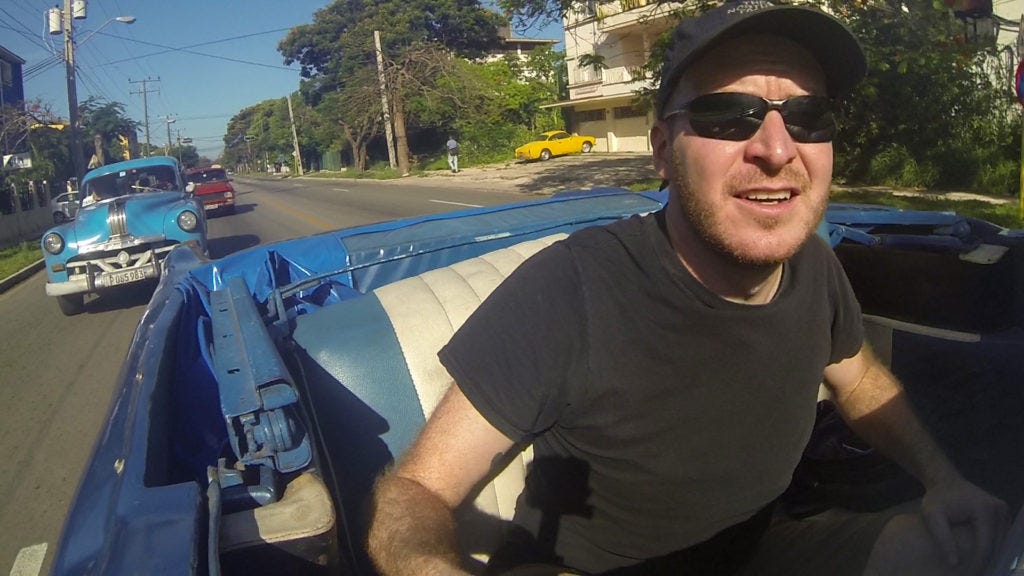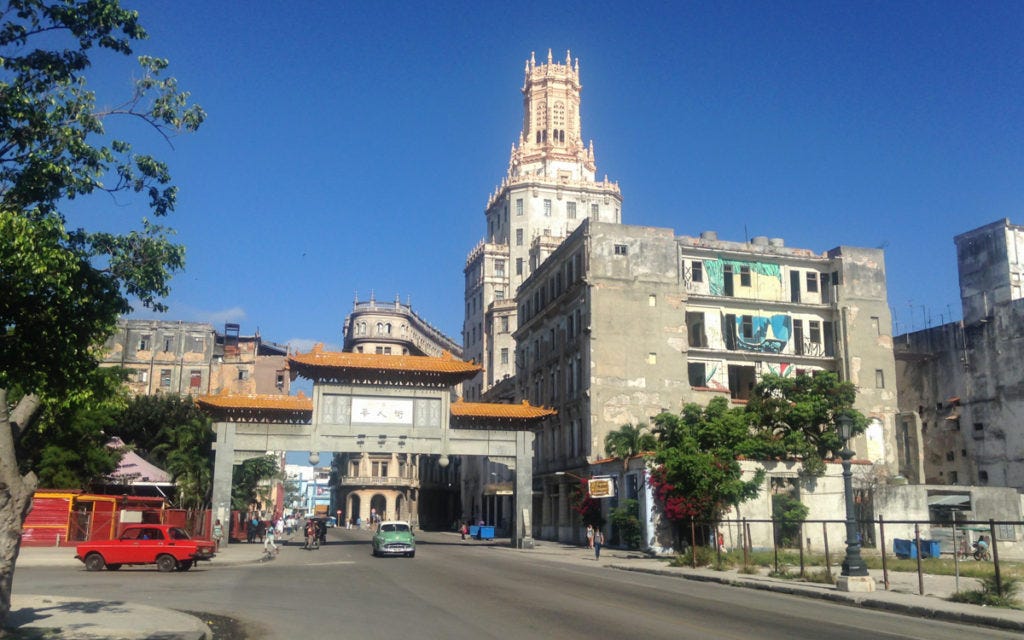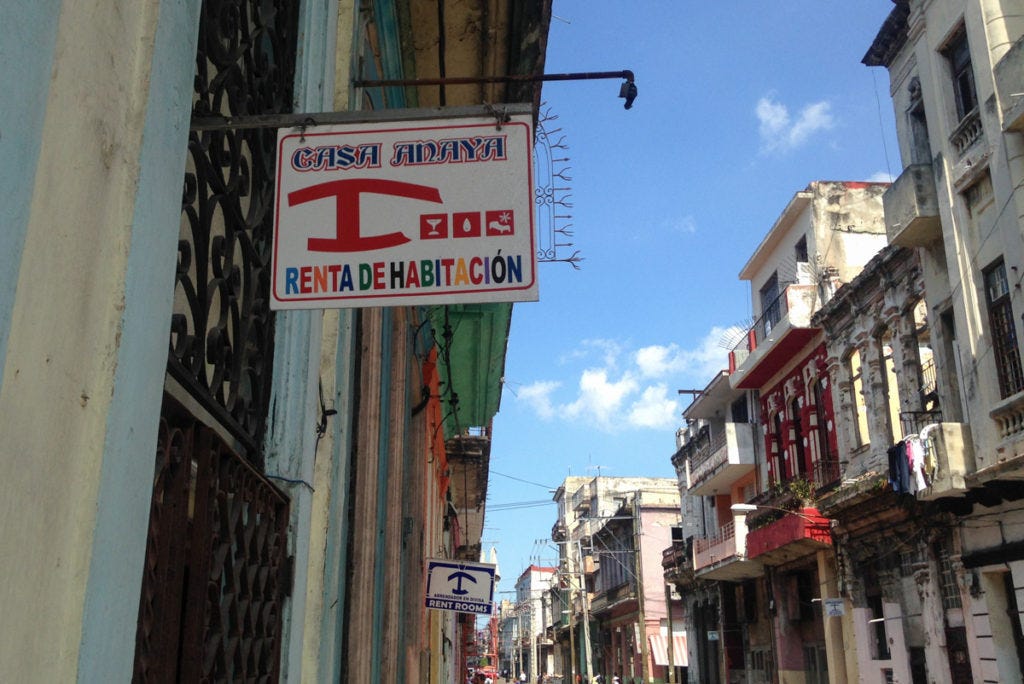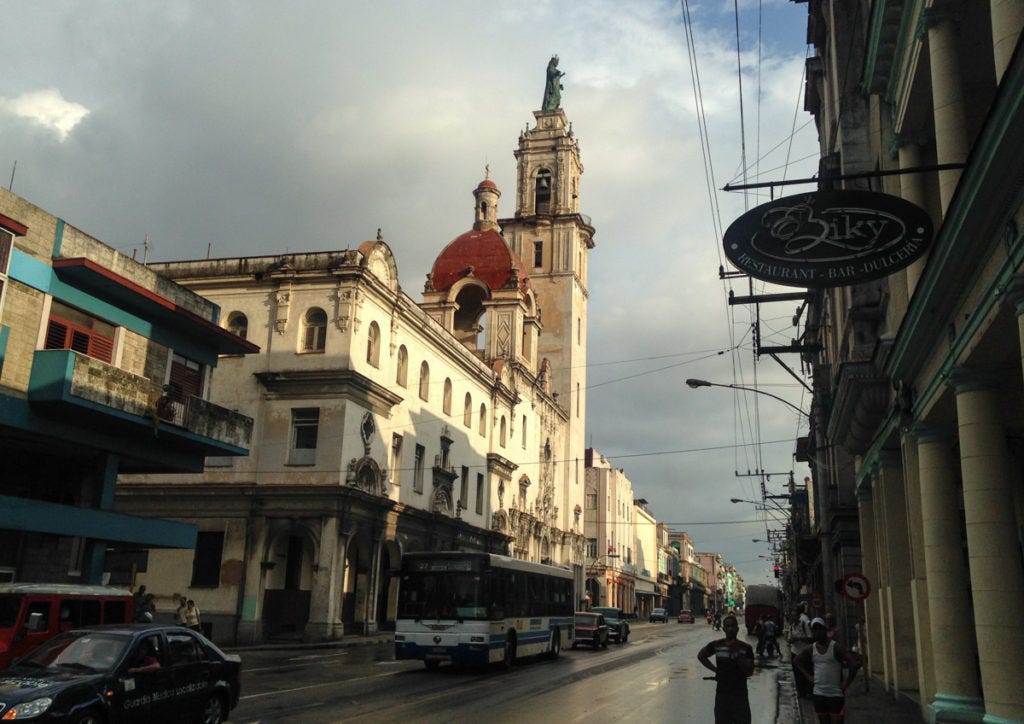The Streets of Centro Havana
My flight from Mexico landed at sunset. Google Maps was wrong about my AirBnB host and the airport taxi dropped me off in the wrong place. Where the hell am I? It was getting dark and I didn’t know how bad this area would get in a late hour. I had a wallet full of cash, a backpack, a passport, and my phone. And nothing I wanted to lose in a random foreign city with a language barrier. I followed the street numbers south for four blocks until I found the host’s building. She welcomed me in and talked my ear off for an hour. She had a nice apartment with a comfortable air conditioned room and an excellent terrace. Just like that, Havana was my new favorite city.
I spent the next few days walking around the streets of Centro and Old Havana. A few of the vehicles in the city were newer and probably belong to a well connected taxi company or politician. Most of the cars, however, are of another era.
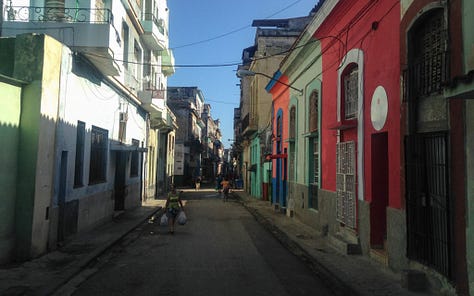

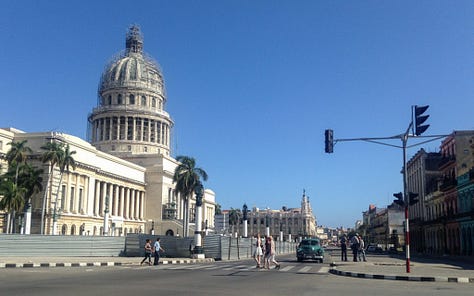
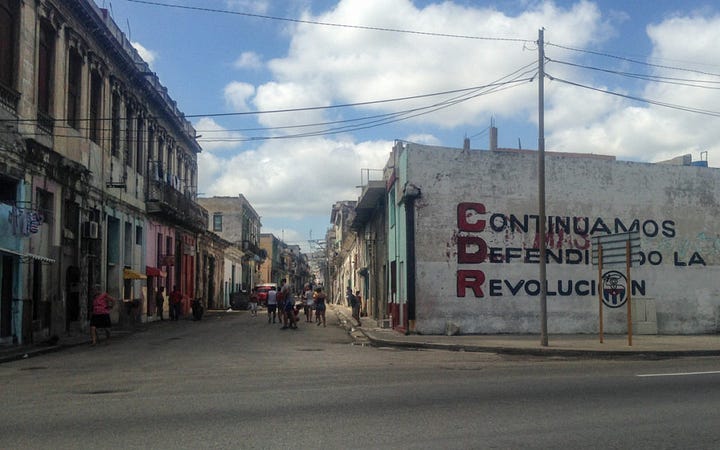
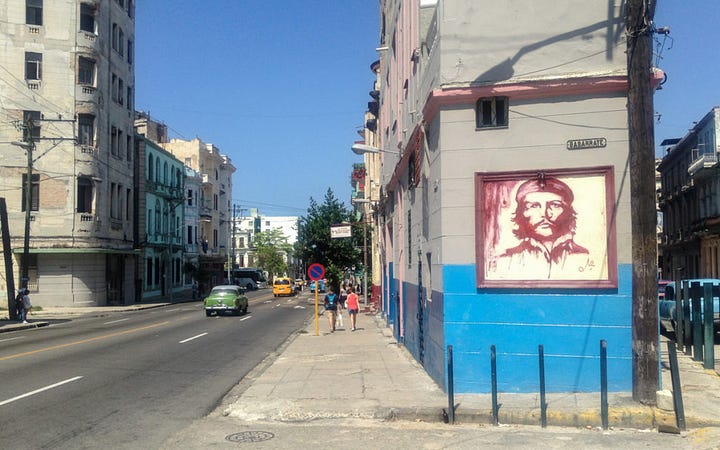
This is Chinatown, or as my host would say, “Chinatown”.
There are famous revolutionaries.
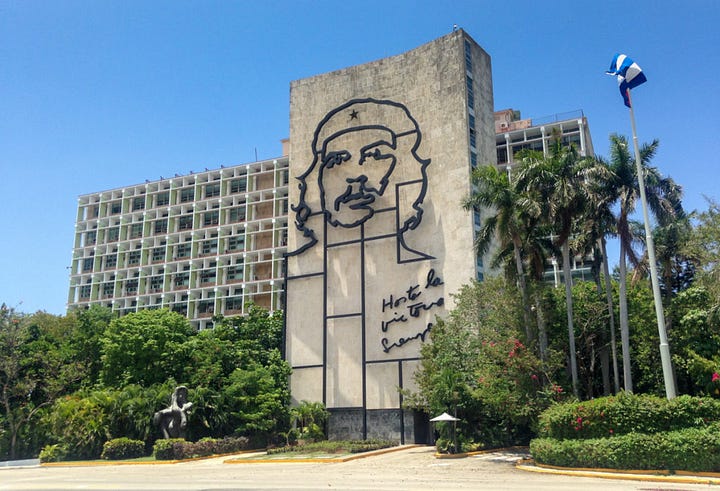
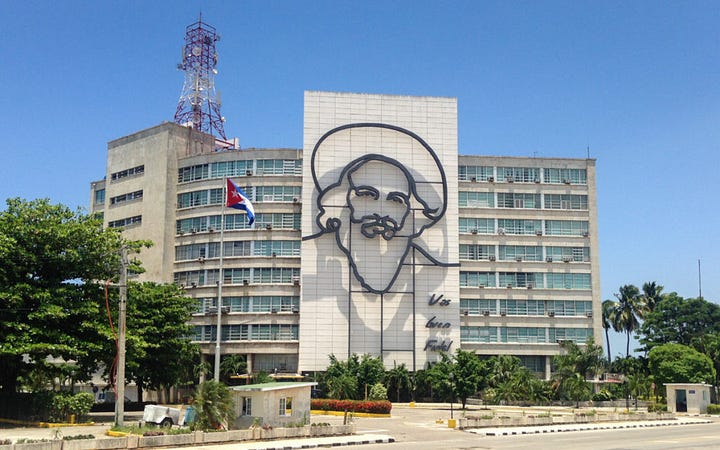
The Cubano food is very simple and quite good.
If you need to rent a Casa for the night, look for one of these signs. They’re everywhere.
On my second day, I took a ride in an old convertible around the old city.
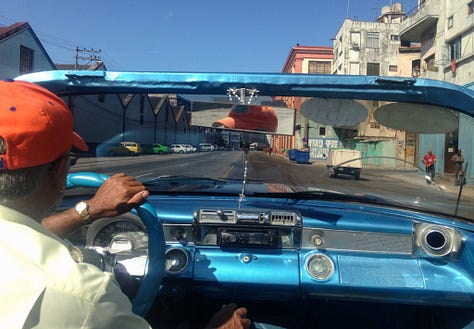
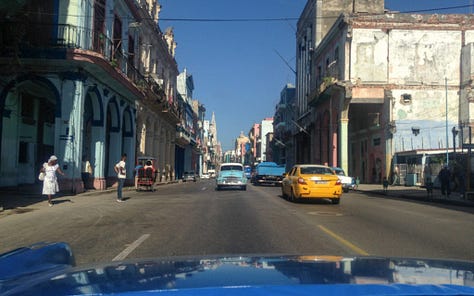
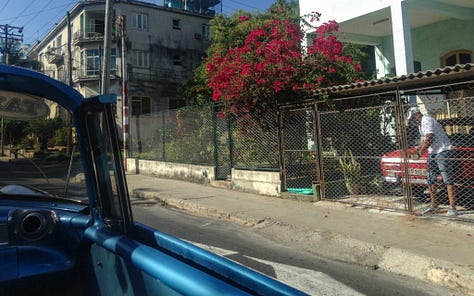
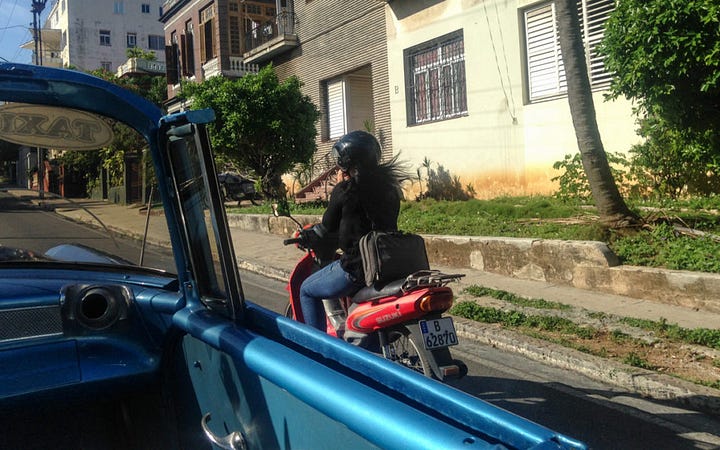

The guide drove me around Centro, Old Havana, the embassies and mansions on Quinta Avenida, and then circled back to La Plaza de Revolucion. I understood some of the things he said about the buildings and he could understand some of my Spanish. I’m getting there a few words at a time.
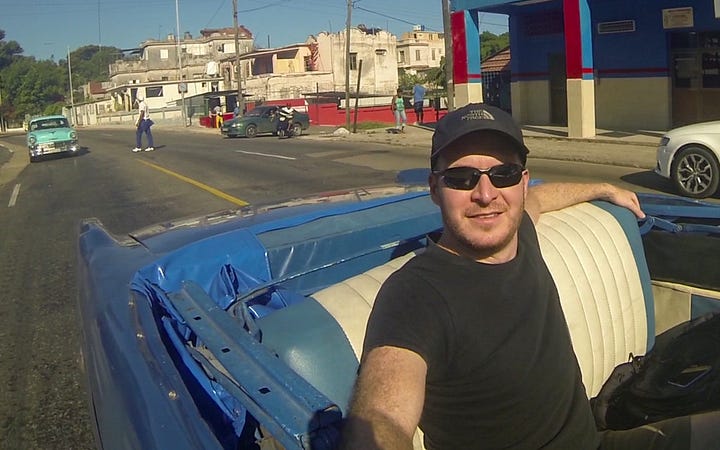

Presently, there are only a few places to get wifi in the city. You can try to piggyback a signal next to one of the hotels. I didn’t have much luck with that. Or you can go to a city park and buy an hourly card to use right there in the park. I thought it would be funny to get on Tinder and try to get a date with one of the local Cubanas at a nearby cafe. Even if it didn’t go anywhere, I didn’t care, I just wanted to be able to say that I met a Cuban lady on my Tinders. When I loaded up the app in a city park, I got this message:
“Haha, their government blocked it!” I thought and left to do something else. I came back the next day and tried it again. The error message came up like before, but this time I closed it out and left the app open. A few seconds later, it started loading in profiles from local women and other female tourists (presumably trying to do the same thing). So it did work after all. Too bad I had to leave in a few hours, facepalm.
I stayed one day longer than I needed to, didn’t plan very much other than the taxi ride, stayed inside in the afternoons because of the heat, didn’t get to experiment with my Tinders, didn’t have enough money or time to explore the country, and couldn’t withdraw it from their ATM machines because our banks don’t connect with theirs. A lot of this left me feeling underwhelmed at my first visit. If I were to come back with more cash, a better plan, and an up to date Tinder profile, who knows?
I left for Mexico City and eventually the States again. The lovely city of Havana and its people faded into the rearview mirror of my memories. For now.





